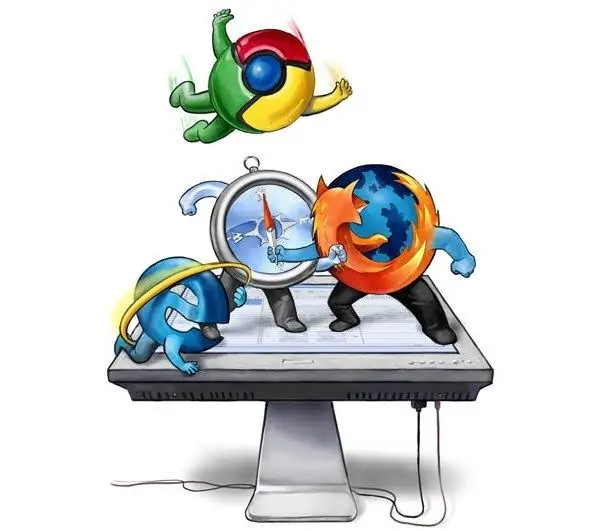- Author Lauren Nevill [email protected].
- Public 2023-12-16 18:48.
- Last modified 2025-01-23 15:15.
During the Internet surfing, various advertising messages, banners, etc. appear quite often. Fortunately, there are several ways to get rid of them.

There are several types of banners on the web: some of them simply advertise the site, while others are malicious. As you might guess, it is the second type that is the most dangerous. Very often, a malicious banner hides one that forces the user to download an update for his browser. Of course, this is not worth doing, since such software either updates itself, or the user receives a special notification from the system about the appearance of a new version. The key feature of such a banner is that it will appear on absolutely all sites visited by the user, and in most cases this is associated with the infection of the computer with some kind of malicious software.
Using antivirus to find problems
In this case, the first thing the user needs is to check the computer for viruses. This is done using the antivirus installed on the computer. A full scan is required and if any vulnerabilities or threats are found, they must be eliminated. In addition, some modern antiviruses offer their users to use anti-banner - a special tool that will block all such messages, therefore, protect the user's computer from adverse effects. The key disadvantage of such a service is that, for the most part, it is paid.
Checking protocol properties
Secondly, the user needs to check the properties of the protocol. To do this, go to the "Network and Sharing Center", open the item "Change network adapter" in the left menu and right-click on "Local network". In the context menu, open "Properties", select "Internet Protocol version 4" and click "Settings". In the window that appears, see if the IP address or DNS server has changed. In most cases, their values should be as follows: "Obtain an IP address automatically" and "Obtain DNS server address automatically". If the checkbox is not on these items, then they need to be reassigned, and the problem can be solved.
There is another way to solve the pressing problem. To do this, right-click on the browser shortcut and select "Properties". In the "Object" field, the user needs to look at the file extension. If it differs from the original and, for example, looks like: opera.url, not opera.exe, then you need to go to the root directory of the browser. There will be 2 files stored here named Opera, one of which is malicious. In order to find it, you need to look at the file type, the value of which in this case will be "Internet shortcut", its size, which is usually 1 KB, and the URL. If the object does not have a URL, then the problem is different. It is this address that is the main point by which you can determine that the file is infected. After removing it, the user again needs to go to the "Properties" of the browser and change the extension to.exe. The same operation must be done in the case of using other browsers.






